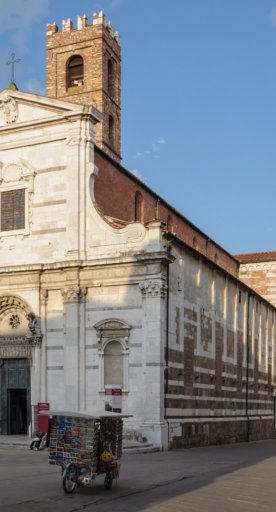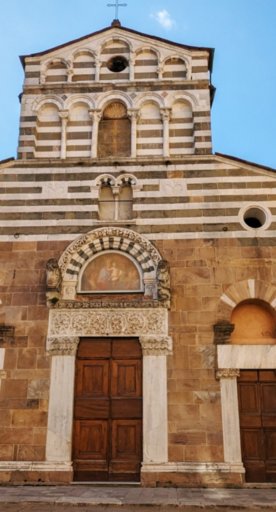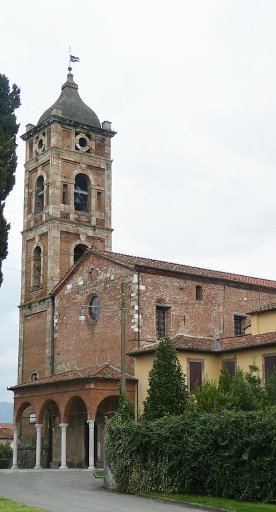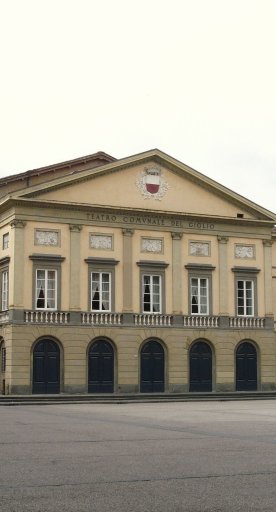Church of Santa Maria Bianca in Lucca
An interesting architectural structure with a unique unfinished façade
This church is commonly known as “Santa Maria Bianca”, but its original name is “Santa Maria Forisportam”. The name refers to the fact that it was situated outside the oldest walls of Lucca, that of Roman times, hence the name “foris portam” (outside the gate). The nickname “Bianca” comes from the characteristic limestone façade of Santa Maria del Giudice.
The presence of the sacred building is documented for the first time in a document of the archbishop’s archive of 768. It was rebuilt in the 13th century and deeply modified between the 16th and 18th century, when the vaulted roof and the large circular windows were built.
The church has three naves, with transept and apse. On the façade in the Romanesque style of Lucca, open three portals surmounted by lintels with classical motifs. The interior shows more elements of the Roman period and the medieval colonnades with capitals.
The pictorial works include two important 16th-century works by Guercino, "Santa Lucia and L’Assunta con i santi".
Another two attractions are the chapel with the burial of Chiara Matraini, known as “the Sybil from Lucca”, one of the few female poets of the Renaissance, and the solar sundial with dark room, which consists of an hour line traced on the floor and a light hole on the south wall. When the light meets the hour line it means that the sun has reached maximum height, indicating the exact midday of the place, of 7 minutes and 55 seconds behind the solar hour of Rome.
The square, like the church, is called “Santa Maria Bianca” instead of “Santa Maria foris portam”. It also has a third name, “Piazza della Colonna Mozza”, due to the presence of a Roman column, no longer intact, used in the Middle Ages as arrival point by the knights of the town palio.










